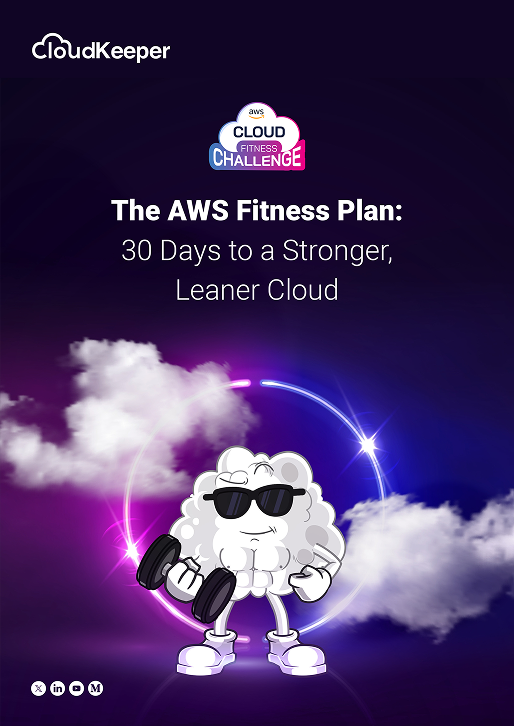What are AWS Reserved Instances?
AWS Reserved Instances is a billing discount that offers significant cost savings to businesses that commit to a certain level of usage.
For organizations with stable and predictable workloads, AWS Elastic Cloud Compute (EC2) instances can be reserved in advance, making AWS Reserved Instances a more cost-effective choice over on-demand instances.
By opting for AWS Reserved Instances, you'll effectively reduce your expenses. However, it's essential to remember that saving money through this approach, like any other strategy, comes with a learning curve. To avoid potential pitfalls, it's crucial to make thoughtful selections of AWS instance type.
Following are the types of AWS RIs
- Standard RIs: Ideal for steady-state usage, they offer the highest discounts (up to 72% off On-Demand).
- Convertible RIs: Offer a discount (up to 54% off On-Demand) and the option to change the attributes of the Reserved Instance if the exchange creates an equivalent or greater Reserved Instance. For steady-state operation, Convertible RIs are best suited.
It is possible to schedule RI launches within the time limits you specify. Depending on the capacity reservation, there can be a predictable recurring schedule within a fraction of a day, week, or month.
The Essential considerations while purchasing AWS Reserved Instances
Purchases of AWS Reserved Instances are infrequent:
- The key point to remember is that when you make a reservation purchase, you commit to paying for every hour of the RI term regardless of whether the AWS RIs are used or not.
- Whenever you purchase Reserved Instances in bulk once a year, your AWS RI needs may change over the course of that year due to changes to your infrastructure.
- It has been recommended to follow the iterative Reserved Instances approach rather than buying RI once a year. It helps to align your changing business needs effectively over time providing more cost savings over a once-a-year approach.
Excessive purchases of AWS RIs:
AWS offers Reserved Instances with three payment options: All Upfront, Partial Upfront, and No Upfront over 1 or 3-year terms. Depending on the amount paid upfront and the term length, discounts are greater.
Calculate your specific reservation needs instead of just buying the RI with the greatest discount on a 3-year term.
Insufficient purchasing of AWS RIs:
We sometimes buy too few Reserved Instances (RIs) to be on the safer side and not overspend. We want to get just enough computing power, but this cautious approach can lead to running out of computing resources.
When an organization makes this mistake, it can face various problems, and fixing it often means spending more money.
Extending the purchase period:
You need to review the contract you signed three years ago if it doesn't properly reflect your business needs today. With AWS Reserved Instances, you can buy them in smaller chunks, increasing your flexibility and allowing you to phase out no longer-needed instances.
Failure to manage changes and inaccurate calculations:
Effectively planning and managing your AWS Cloud infrastructure is crucial for maximizing its benefits. CloudKeeper offers a comprehensive solution that provides insights and takes action to help you better manage your expenses and AWS Reserved Instances.
Right-sizing Without Simulation:
A right-sizing recommendation that does not account for how those changes may affect your infrastructure can lead to hesitant and suboptimal decisions. It’s highly beneficial that your rightsizing engine gives multiple suggestions and a means to visually validate each one. By doing that, you can inspect the possibility of cutting and take that into account when comparing savings. In the absence of this technique, you may be too conservative (finite savings) or too aggressive (efficiency hit/outage).
Improper AWS RIs requirements:
The use of incorrect calculation methods by businesses when determining their reservation needs can lead to missed possibilities or unnecessary RI purchases. It is common for businesses to determine their needs based on the overall consumption rate of their AWS instances rather than evaluating their relevance to each other.
Using the incorrect approach to determine RI needs would result in the over-purchase of reservations.
For example - If three instances ran during a given timeframe, but each for 30% of that timeframe. In the scenario of all three instances running at mutually exclusive times, and a single instance can operate 90% of the time, it could be a reasonable suggestion to purchase just one reservation in this scenario. By using CloudKeeper Auto's Reserved Instance Planner, you can calculate hourly instance counts for each type of instance per OS and availability zone, which is the most efficient method for making RI purchase decisions.
Do you want to switch to a smarter AWS RI Management, and receive benefits like zero-touch RI Management, the flexibility of on-demand for all your Amazon EC2 resources, buy-back guarantee for unused reserved instances, FinOps Support, and much more, at no cost from your pocket? If your answer is yes, then CloudKeeper Auto is precisely what you're looking for. Book a free demo today.
